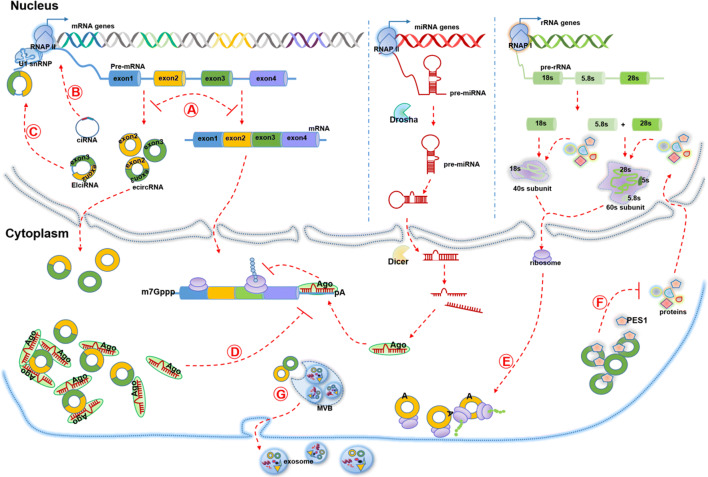Fig. 2.
Functions and mechanisms of circRNA. a circRNAs’ backsplicing process forms three types of circRNAs and competes with linear RNAs’ canonical splicing to maintain the transcripts dynamic balance. Mature mRNA could be translated into proteins or inhibited by miRNAs which bound with Argonauto 2 (AGO2) protein. b CiRNAs accumulate to transcription sites and promote transcription by regulating elongation Pol II machinery. c EIciRNAs located in nucleus bind to U1 snRNA and form EIciRNA–U1 snRNP complexes to enhance gene transcription by interacting with Pol II transcription complex at the promoters of parental genes. d EcircRNAs exported into cytoplasm share some miRNA binding sites and sponge miRNAs to inhibit their effects on mRNA. e CircRNAs containing extensive m6A modification are sufficient to drive translation of circRNAs in a cap-independent fashion. f CircRNA (circANRIL) binds to PES1 which is essential to 36S and 32S pre-rRNA processing to mature 5.8S and 28S rRNA and thus impair exonuclease-mediated pre-rRNA processing and ribosome biogenesis. g CircRNAs could be packaged into exosomes and exported to extracellular space or circulating system

